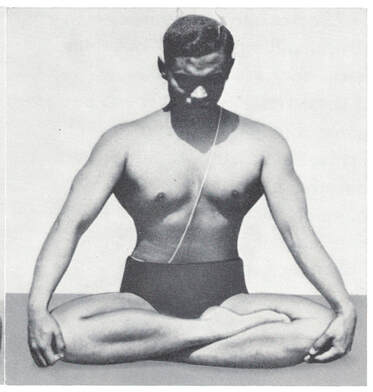 Swastikasana, by Gouri Shankar Mukerji Swastikasana, by Gouri Shankar Mukerji Through our research and practice, we have found confusion regarding the names and positions of two seated postures: Swastikasana and Siddhasana. Swastikasana is left untranslated as "Swastika", or understood as Auspicious, Good Luck or Twisted Cross Pose. Siddhasana is called the Siddha's or Adept's Pose, or Success in Meditation. Up until the 1970s or even later, Swastikasana was typically a seated, cross-legged position with the feet intertwined between the legs. This instruction is given by teachers of the Ghosh lineage such as Buddha Bose and Gouri Shankar Mukerji. It's also found in texts of hathayoga that predate the twentieth century. 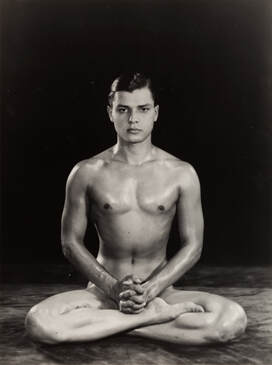 Swastikasana, by Buddha Bose Swastikasana, by Buddha Bose The Hathapradipika instructs Swastikasana as follows: "Placing the soles of both feet well between the knees and thighs [and] sitting up with the body straight: they call that the auspicious pose*" HP 1.19 (See *below for note and credit on translation). However, Bikram Choudhury in his list of "84", mistakes Siddhasana for Swastikasana. He teaches it as the position pictured at the top of this blog: balancing, resting on one heel, using the fingers to close off the senses. However, this is much closer to what Gouri Shankar Mukerji teaches as Siddhasana. 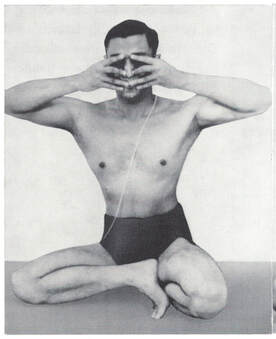 Siddhasana, by Gouri Shankar Mukerji Siddhasana, by Gouri Shankar Mukerji In 84 Yoga Asanas, Gouri Shankar Mukerji instructs Siddhasana as follows: "Sit on one heel, blocking the anus. Hold this heel in place with the other heel. Inhale. Now close all apertures on your face with your fingers. The right thumb on the right ear and the left thumb on the left ear, right forefinger on the right eye and the left forefinger on the left eye, left middle finger on the left nostril and the right middle finger on the right nostril, right ring and small fingers on the mouth (halfway) and the left ring and small fingers on the other side of the mouth. Thus all openings on your face are blocked with your ten fingers" (p. 59). Given this history, there is great confusion over the name of the posture at the top of the page. While some call it "Good Luck", we suggest it should not be called that given the fact there is a posture consistently performed as Swastikasana, Good Luck, that is different in shape. The straight-leg version pictured above is a new posture if we look at yoga's history beyond the last few decades. For this reason, we would suggest it should take on a new name. * This translation is from Hathapradipika.online which is the work of Dr James Mallinson, Dr Jason Birch, Prof. Dr. Jürgen Hanneder and Dr Mitsuyo Demoto-Hahn. They are working on Light on Hatha Yoga: A critical edition and translation of the Hathapradipika, the most important premodern text on physical yoga.
We are ever grateful for their work and look forward to the final publication.
0 Comments
There seems to be an endless focus on the arms in yoga postures. This comes in the form of discussing which finger position or grip is the most effective, whether or not the elbows are straight, or what the shoulders should look like.
This is usually not useful. Unless we are talking about an arm pose like Crow or Plank, it will not help us to focus on the hands, elbows or shoulders. Here is why... The majority of postures are about the spine. The arms do not move the spine. The muscles that move the spine are the muscles that move the spine: abdominal and back muscles. So if we are trying to move the spine, it won't help us to focus on the arms. TWO COMMON MISUNDERSTANDINGS There are two common misunderstandings at play here. The first is that the spine can change length. It can change shape, but this is not the same as the spine itself actually growing longer. The spine is a fixed length. There are vertebrae and discs that make up the spine. The spine itself cannot lengthen. One side of the spine can lengthen, but it does so by the other side of the spine shortening. This is what we do in backward and forward bends. In a backward bend the front of the body does get longer, but that's because the back gets shorter. If we want to change the position of the spine, we have to do so one side (front, back, left, right) at a time. The second misunderstanding is confusing shoulder elevation for spine length. In the picture above, the spine is no longer than with the arms down by the side. It is only that the shoulders are elevated, or to say it another way, the shoulders are shrugged up by the ears. This is trapezius engagement. With the arms overhead and the trapezius engaged, it may look like the spine is longer, but in fact it is an optical illusion. It is just the arms and the shoulders that have moved. Often, it is said that reaching with the arms will help bend the spine. But reaching with the arms moves the shoulders. Some shoulder muscles, namely the trapezius and the rhomboids, do attach to the spine. But they get their stability from the spine in order to move the shoulder blades. These are not muscles that change the shape of the spinal column. To put it simply, the spinal muscles move the spine. The arms, shoulders and hands do not. In spinal postures, do not worry about lengthening your spine or using your arms. Try to put your focus on the muscles that move the spine. |
AUTHORSScott & Ida are Yoga Acharyas (Masters of Yoga). They are scholars as well as practitioners of yogic postures, breath control and meditation. They are the head teachers of Ghosh Yoga.
POPULAR- The 113 Postures of Ghosh Yoga
- Make the Hamstrings Strong, Not Long - Understanding Chair Posture - Lock the Knee History - It Doesn't Matter If Your Head Is On Your Knee - Bow Pose (Dhanurasana) - 5 Reasons To Backbend - Origins of Standing Bow - The Traditional Yoga In Bikram's Class - What About the Women?! - Through Bishnu's Eyes - Why Teaching Is Not a Personal Practice Categories
All
Archives
May 2024
|

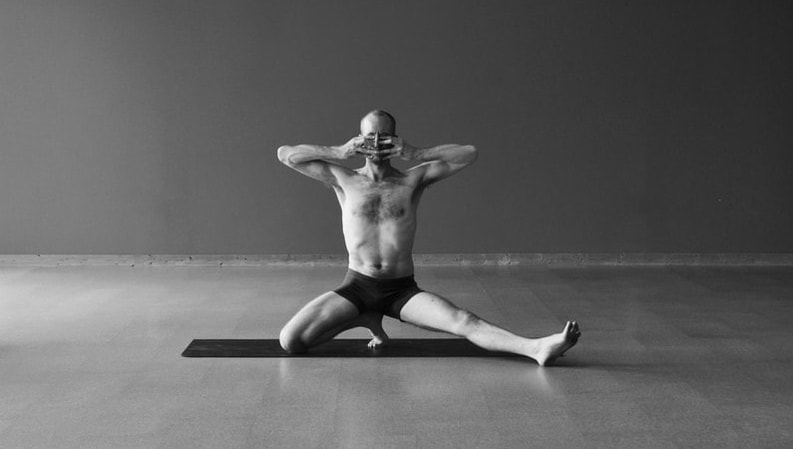
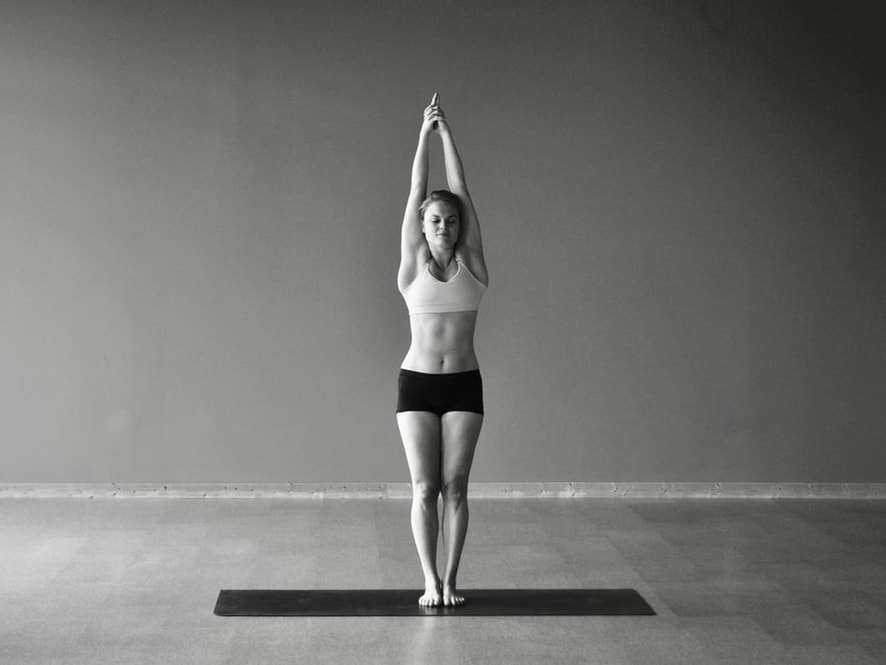





 RSS Feed
RSS Feed